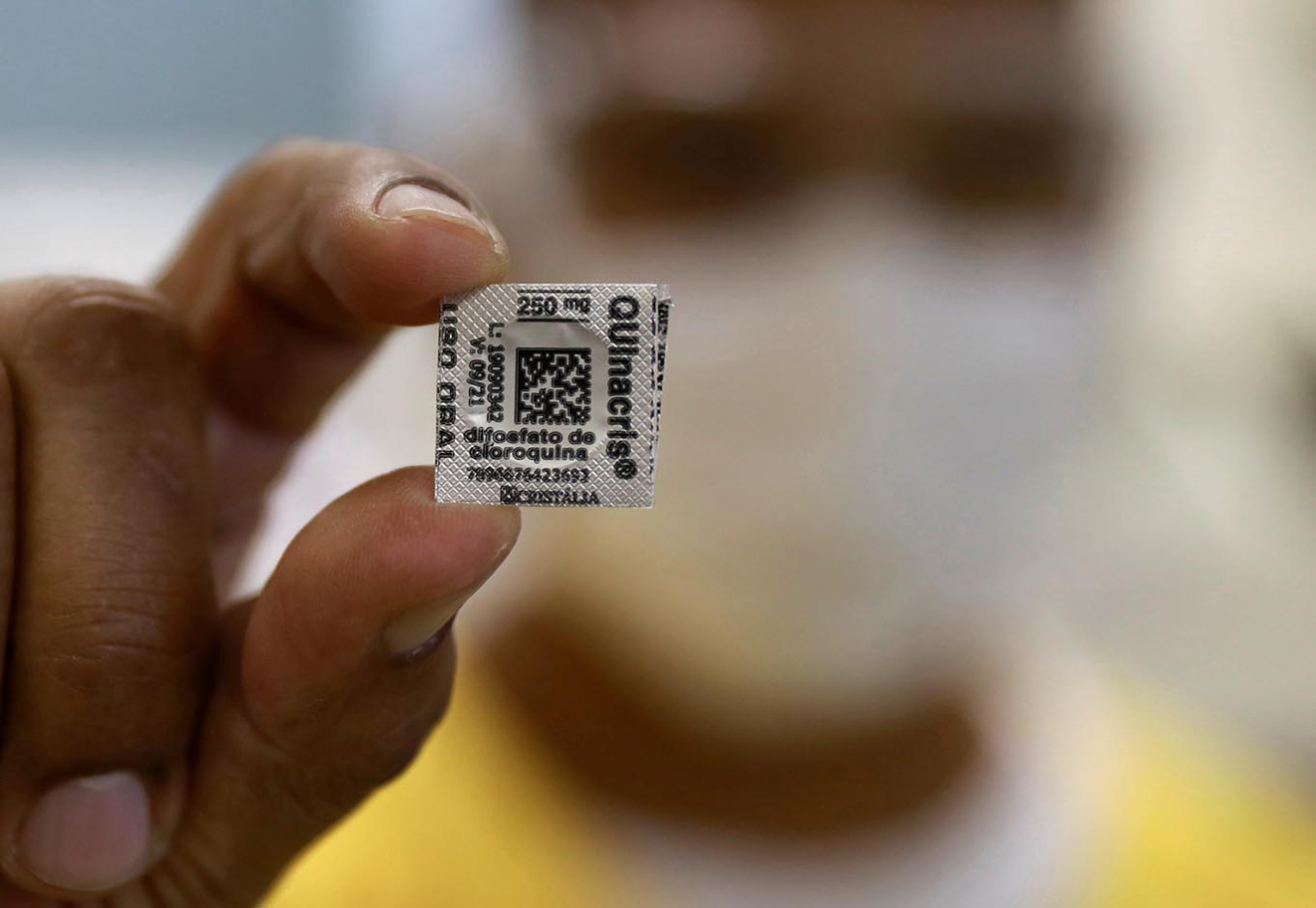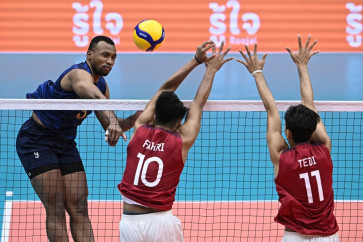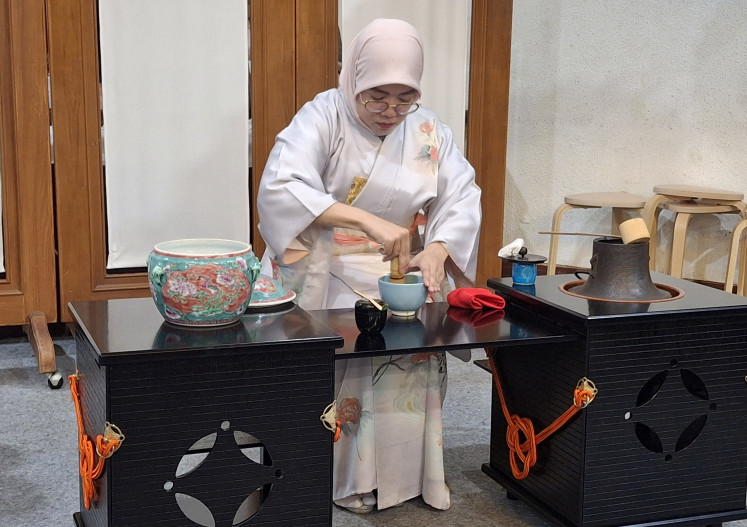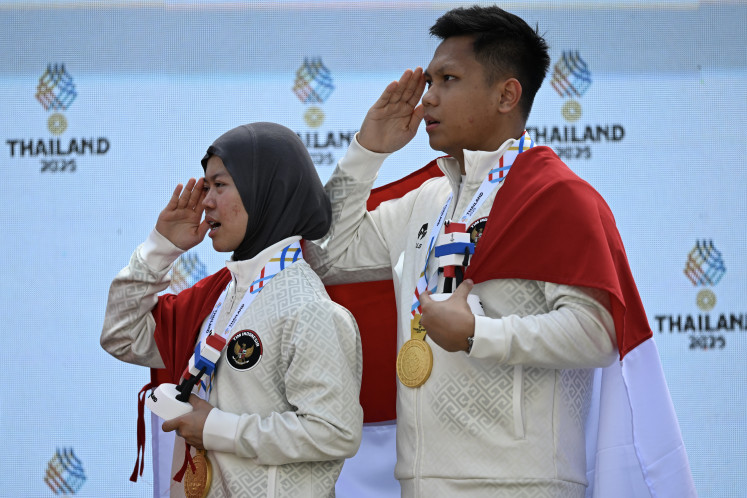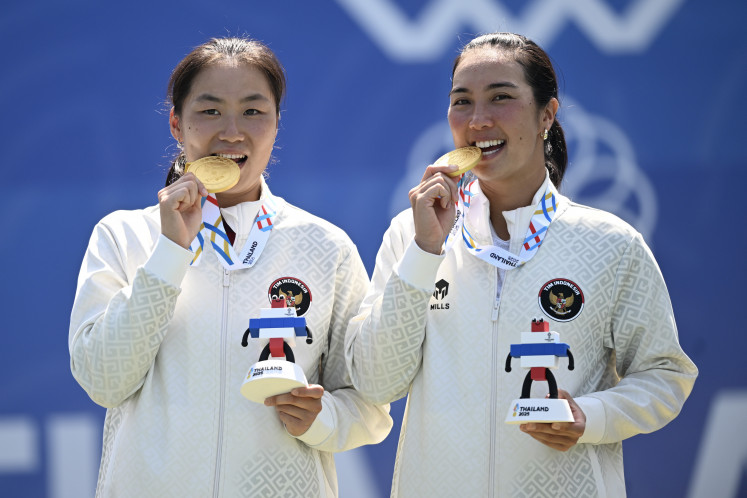Popular Reads
Top Results
Can't find what you're looking for?
View all search resultsPopular Reads
Top Results
Can't find what you're looking for?
View all search resultsWhy countries should stop using anti-malarial drugs for COVID-19
There is a fundamental problem: while evidence on the efficacy of HCQ/CQ stands on shaky grounds, evidence on the safety profile shows chilling mortality risks among COVID-19 patients taking the drugs.
Change text size
Gift Premium Articles
to Anyone
A
t least 55 countries have ordered large supplies of the anti-malarial drugs Hydroxychloroquine (HCQ) and Chloroquine (CQ) from India, manufacturer of 70 percent of the world’s HCQs, to treat COVID-19 patients.
These countries, including the US, Thailand, Indonesia, Malaysia, and the Philippines, are spending their COVID-19 response budget to import the drugs almost without scientific evidence.
Decision taken by the US Food and Drug Administration to issue an Emergency Usage Authorisation on the use of HCQ/CQ for COVID-19 has been severely criticized by its former leaders.
There is a fundamental problem: while evidence on the efficacy of HCQ/CQ stands on shaky grounds, evidence on the safety profile shows chilling mortality risks among COVID-19 patients taking the drugs.
Evidence from laboratory works
The Wuhan Institute of Virology had carried out in-vitro studies for chloroquine and subsequently hydroxychloroquine to look at dosages needed for a substance to kill the virus. The in vitro study was conducted in a laboratory without involving real COVID-19 patients.
Their studies showed that HCQ/CQ could kill SARS-CoV-2, COVID-19 causing pathogen, in low dosages.
Although promising, an in vitro study is carried out in a lab outside the context of the human body. It cannot determine the real response of the very complex human biological systems.
Also, an in-vitro study is not designed to determine the dose needed for sufficient blood level to achieve the desired therapeutic effect.
Therefore, human trials on real COVID-19 patients are needed.
Methodological deficits in the first human trial
To date, there is only one human trial from France claiming HCQ efficacy for COVID-19 patients. This report was published on March 20, 2020, in the International Journal of Anti-Microbial Agents.
Didier Raoult and his University of Marseille team reported their HCQ trial on 36 COVID-19 patients.
The researchers divided the patients into two groups. Group A (20 patients) received 200mg of HCQ three times a day. Group B (16 patients) received usual care without HCQ. The researchers also gave six patients in group A Azithromycin, an anti-bacterial, in addition to HCQ.
On the sixth day, all patients were RT-PCR tested. It turned out that more patients in group A were COVID-19 negative, compared to group B.
Also, all patients receiving a combination of Azithromycin and HCQ tested negative. Raoult claimed that “hydroxychloroquine treatment is significantly associated with viral load reduction/disappearance in COVID-19 patients and its effect is reinforced by azithromycin”.
Scientists later voiced out concerns over the quality of the study.
Five days after Raoult’s article, Kerstin Frie and Kome Gbinigie from The Center for Evidence-Based Medicine at Oxford University comprehensively summarised scientists’ concerns as follows:
First, the actual number of participants in group A was 26, but six patients were excluded halfway through, because of treatment termination. They were excluded because they were admitted to the intensive care unit (ICU), died, or experienced side effects. Data from these six patients were not included in the analysis.
This allows attrition bias because there was data from a portion of patients initially recruited but not analyzed.
Second, with only 36 patients, this study is relatively weak. Raoult and his team calculated at least 48 patients were needed for sufficient statistical power. This means, there is a risk that this research might have produced false-positive results, i.e. the therapeutic effect is too prominent due to the small sample size.
Third, one of the patients who tested negative with RT-PCR on day six turned out to be positive again on day eight. This shows another weakness, where there was no medium or long term data on the effect HCQ.
Fourth, the experimental design is not the best trial design to determine the efficacy and safety of a drug in humans.
The best design is a randomized controlled trial, where researchers divide patients randomly into at least two groups, the HCQ/CQ recipient and the non-HCQ/CQ recipient.
Randomization is very important to minimize allocation bias. For example, intentionally or unintentionally, patients with milder symptoms fall into the HCQ/CQ recipient group so that the result shows that more patients in this group are recovering.
Raoult divides his patients into groups A and B, without randomization, so it is not free from the risk of allocation bias.
Does it work? Scientists still don’t know
Recently, a group of researchers published an observational study that analyzed 1,376 COVID-19 patients in the United States. They compared clinical outcomes of patients administered with HCQ (811 patients) and without HCQ (565 patients).
The results are inconclusive. The researchers acknowledged that the results of this study could not be used to determine the efficacy and safety of HCQ.
Also, they do not recommend the usage of HCQ beyond research setting. They emphasized that randomized controlled trials are needed to decide whether or not HCQ should be used for COVID-19 patients.
High mortality risk
Apart from the inconclusive results of whether HCQ/CQ are effective to treat COVID-19, the mortality risks from using the drugs is very worrying.
A large registry-based study involving 96,000 patients in 671 hospitals around the world was recently reported. The results send chilling messages, whereby those taking HCQ/CQ are at 34-45 percent increased mortality risk and 237-411 percent increased risk to suffer from potentially fatal heart rhythm disturbances.
All this shows that the use of HCQ/CQ for COVID-19 patients might show more harm than benefit. Countries around the world should consider stopping the use of HCQ/CQ beyond tightly controlled and monitored research settings.
As of May 22 2020, the Cochrane COVID-19 Study Register listed 262 human trials on the use of HCQ/CQ for COVID-19, of which 215 are designed as “randomized controlled trial”. Cochrane has also published a protocol for systematically reviewing the outcome of these studies. These may be one of the most sought after research outcome the world has been eagerly waiting.
The drama surrounding massive production and importation of HCQ/CQ throughout the world has once again served as a reminder that public policy must stand on solid scientific grounds. This is to ensure the government use its resources responsibly, especially in times of scarcity.
***
Teguh Haryo Sasongko is Associate Professor, Perdana University RCSI School of Medicine.
This article is republished from The Conversation under a Creative Commons license. Read the original article.

